
mediasoup-client-aiortc
mediasoup-client handler for aiortc Python library
Stars: 69
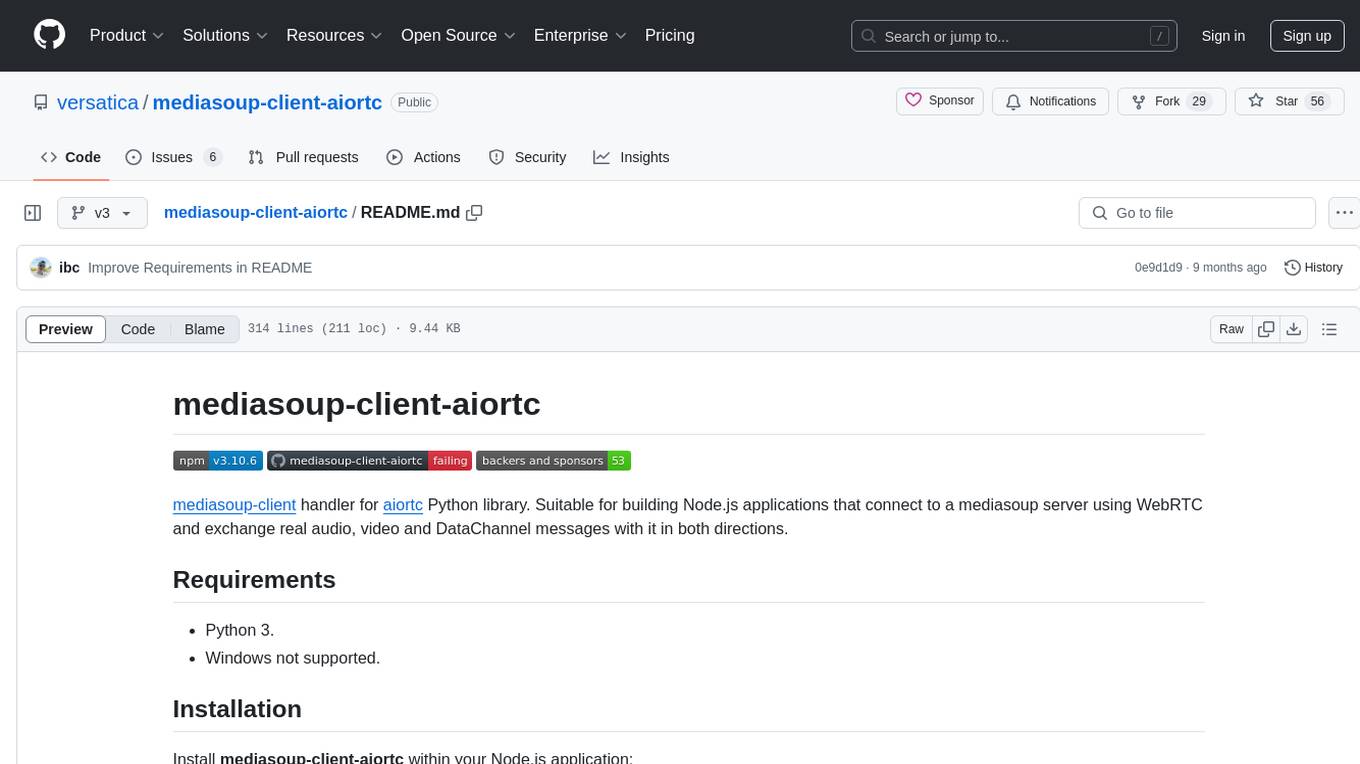
mediasoup-client-aiortc is a handler for the aiortc Python library, allowing Node.js applications to connect to a mediasoup server using WebRTC for real-time audio, video, and DataChannel communication. It facilitates the creation of Worker instances to manage Python subprocesses, obtain audio/video tracks, and create mediasoup-client handlers. The tool supports features like getUserMedia, handlerFactory creation, and event handling for subprocess closure and unexpected termination. It provides custom classes for media stream and track constraints, enabling diverse audio/video sources like devices, files, or URLs. The tool enhances WebRTC capabilities in Node.js applications through seamless Python subprocess communication.
README:
mediasoup-client handler for aiortc Python library. Suitable for building Node.js applications that connect to a mediasoup server using WebRTC and exchange real audio, video and DataChannel messages with it in both directions.
- Python 3.
- Windows is not supported.
Install mediasoup-client-aiortc within your Node.js application:
npm install mediasoup-client-aiortcThe "postinstall" script in package.json will install the Python libraries (including aiortc). You can override the path to python executable by setting the PYTHON environment variable:
PYTHON=/home/me/bin/python3.13 npm install mediasoup-client-aiortcSame thing once you run your Node.js application. mediasoup-client-aiortc will spawn Python processes and communicate with them via UnixSocket. You can override the python executable path by setting the PYTHON environment variable:
PYTHON=/home/me/bin/python3.13 node my_app.js// ES6 style.
import {
createWorker,
Worker,
WorkerSettings,
WorkerLogLevel,
AiortcMediaStream,
AiortcMediaStreamConstraints,
AiortcMediaTrackConstraints,
} from 'mediasoup-client-aiortc';
// CommonJS style.
const {
createWorker,
Worker,
WorkerSettings,
WorkerLogLevel,
AiortcMediaStream,
AiortcMediaStreamConstraints,
AiortcMediaTrackConstraints,
} = require('mediasoup-client-aiortc');Creates a mediasoup-client-aiortc Worker instance. Each Worker spawns and manages a Python subprocess.
@async
@returnsWorker
const worker = await createWorker({
logLevel: 'warn',
});The Worker class. It represents a separate Python subprocess that can provide the Node.js application with audio/video tracks and mediasoup-client handlers.
The Python subprocess PID.
@typeString, read only
Whether the subprocess is closed.
Whether the subprocess died unexpectedly (probably a bug somewhere).
Whether the subprocessed is closed. It becomes true once the worker subprocess is completely closed and 'subprocessclose' event fires.
@typeBoolean, read only
Closes the subprocess and all its open resources (such as audio/video tracks and mediasoup-client handlers).
Mimics the navigator.getUserMedia() API. It creates an AiortcMediaStream instance containing audio and/or video tracks. Those tracks can point to different sources such as device microphone, webcam, multimedia files or HTTP streams.
@async
@returnsAiortcMediaStream
const stream = await getUserMedia({
audio: true,
video: {
source: 'file',
file: 'file:///home/foo/media/foo.mp4',
},
});
const audioTrack = stream.getAudioTracks()[0];
const videoTrack = stream.getVideoTracks()[0];Creates a mediasoup-client handler factory, suitable for the handlerFactory argument when instantiating a mediasoup-client Device.
@async
@returnsHandlerFactory
const device = new mediasoupClient.Device({
handlerFactory: worker.createHandlerFactory(),
});Note that all Python resources (such as audio/video) used within the Device must be obtained from the same mediasoup-client-aiortc Worker instance.
Emitted if the subprocess abruptly dies. This should not happen. If it happens there is a bug in the Python component.
Emitted when the subprocess has closed completely. This event is emitted asynchronously once worker.close() has been called (or after 'died' event in case the worker subprocess abnormally died).
type WorkerSettings = {
/**
* Logging level for logs generated by the Python subprocess.
*/
logLevel?: WorkerLogLevel; // If unset it defaults to "error".
};type WorkerLogLevel = 'debug' | 'warn' | 'error' | 'none';Logs generated by both, Node.js and Python components of this module, are printed using the mediasoup-client debugging system with "mediasoup-client-aiortc" prefix/namespace.
A custom implementation of the W3C MediaStream class. An instance of AiortcMediaStream is generated by calling worker.getUserMedia().
Audio and video tracks within an AiortcMediaStream are instances of FakeMediaStreamTrack and reference "native" MediaStreamTracks in the Python subprocess (handled by aiortc library).
The argument given to worker.getUserMedia().
type AiortcMediaStreamConstraints = {
audio?: AiortcMediaTrackConstraints | boolean;
video?: AiortcMediaTrackConstraints | boolean;
};Setting audio or video to true equals to {source: "device"} (so default microphone or webcam will be used to obtain the track or tracks).
type AiortcMediaTrackConstraints = {
source: 'device' | 'file' | 'url';
device?: string;
file?: string;
url?: string;
format?: string;
options?: object;
timeout?: number;
loop?: boolean;
decode?: boolean;
};Determines which source aiortc will use to generate the audio or video track. These are the possible values:
- "device": System microphone or webcam.
- "file": Path to a multimedia file in the system.
- "url": URL of an HTTP stream.
If source is "device" and this field is given, it specifies the device ID of the microphone or webcam to use. If unset, the default one in the system will be used.
- Default values for
Darwinplatform:- "none:0" for audio.
- "default:none" for video.
- Default values for
Linuxplatform:- "hw:0" for audio.
- "/dev/video0" for video.
Mandatory if source is "file". Must be the absolute path to a multimedia file.
Mandatory if source is "url". Must be the URL of an HTTP stream.
Specifies the device format used by ffmpeg.
-
Default values for
Darwinplatform:- "avfoundation" for audio.
- "avfoundation" for video.
-
Default values for
Linuxplatform:- "alsa" for audio.
- "v4f2" for video.
Specifies the device options used by ffmpeg.
-
Default values for
Darwinplatform:-
{}for audio. -
{ framerate: "30", video_size: "640x480" }for video.
-
-
Default values for
Linuxplatform:-
{}for audio. -
{ framerate: "30", video_size: "640x480" }for video.
-
See documentation in aiortc site (decode option is not documented but you can figure it out by reading usage examples).
mediasoup-client-aiortc supports sending/receiving string and binary DataChannel messages. However, due to the lack of Blob support in Node.js, dataChannel.binaryType is always "arraybuffer" so received binary messages are always ArrayBuffer instances.
When sending, dataChannel.send() (and hence dataProducer.send()) allows passing a string, a Buffer instance or an ArrayBuffer instance.
npm run lintnpm run testnpm run release:checkPYTHON_LOG_TO_STDOUT=true npm run testSee the list of open issues.
For Tasks:
Click tags to check more tools for each tasksFor Jobs:
Alternative AI tools for mediasoup-client-aiortc
Similar Open Source Tools

mediasoup-client-aiortc
mediasoup-client-aiortc is a handler for the aiortc Python library, allowing Node.js applications to connect to a mediasoup server using WebRTC for real-time audio, video, and DataChannel communication. It facilitates the creation of Worker instances to manage Python subprocesses, obtain audio/video tracks, and create mediasoup-client handlers. The tool supports features like getUserMedia, handlerFactory creation, and event handling for subprocess closure and unexpected termination. It provides custom classes for media stream and track constraints, enabling diverse audio/video sources like devices, files, or URLs. The tool enhances WebRTC capabilities in Node.js applications through seamless Python subprocess communication.
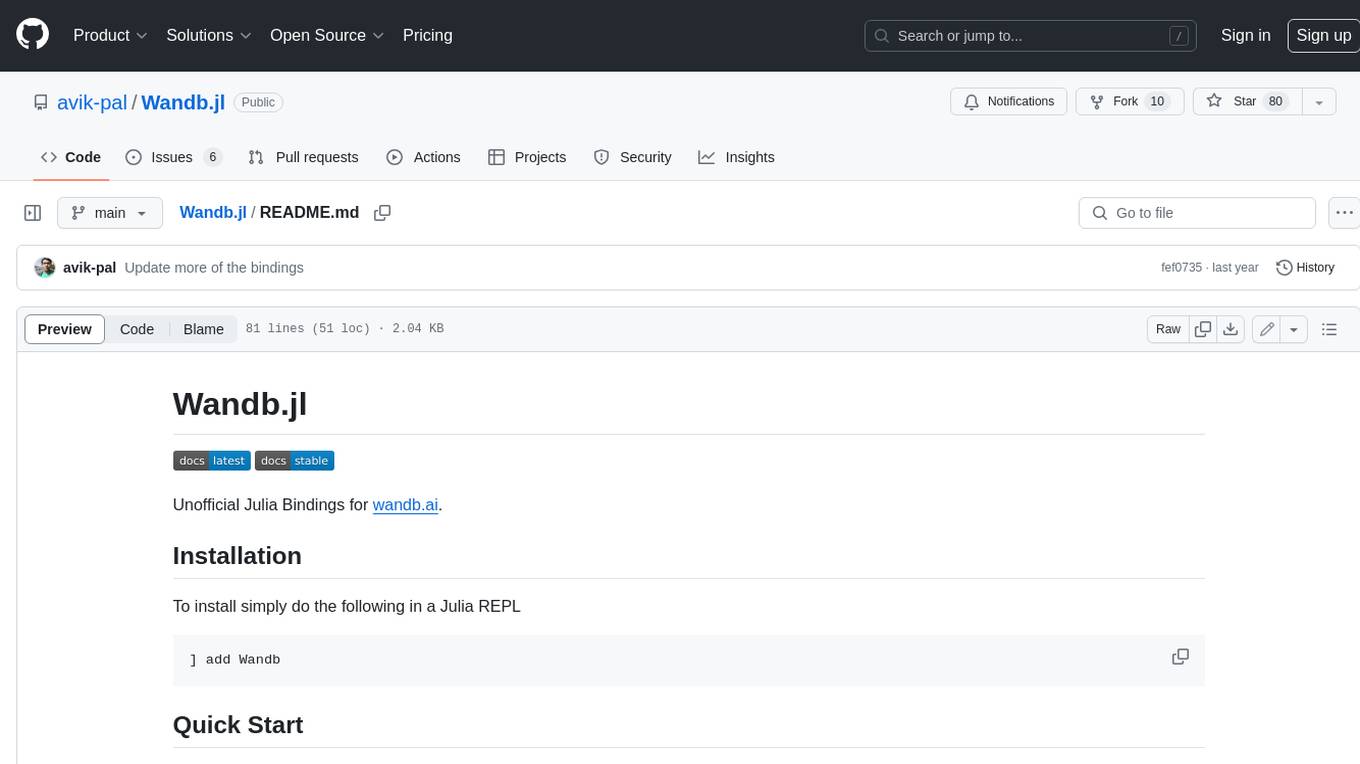
Wandb.jl
Unofficial Julia Bindings for wandb.ai. Wandb is a platform for tracking and visualizing machine learning experiments. It provides a simple and consistent way to log metrics, parameters, and other data from your experiments, and to visualize them in a variety of ways. Wandb.jl provides a convenient way to use Wandb from Julia.
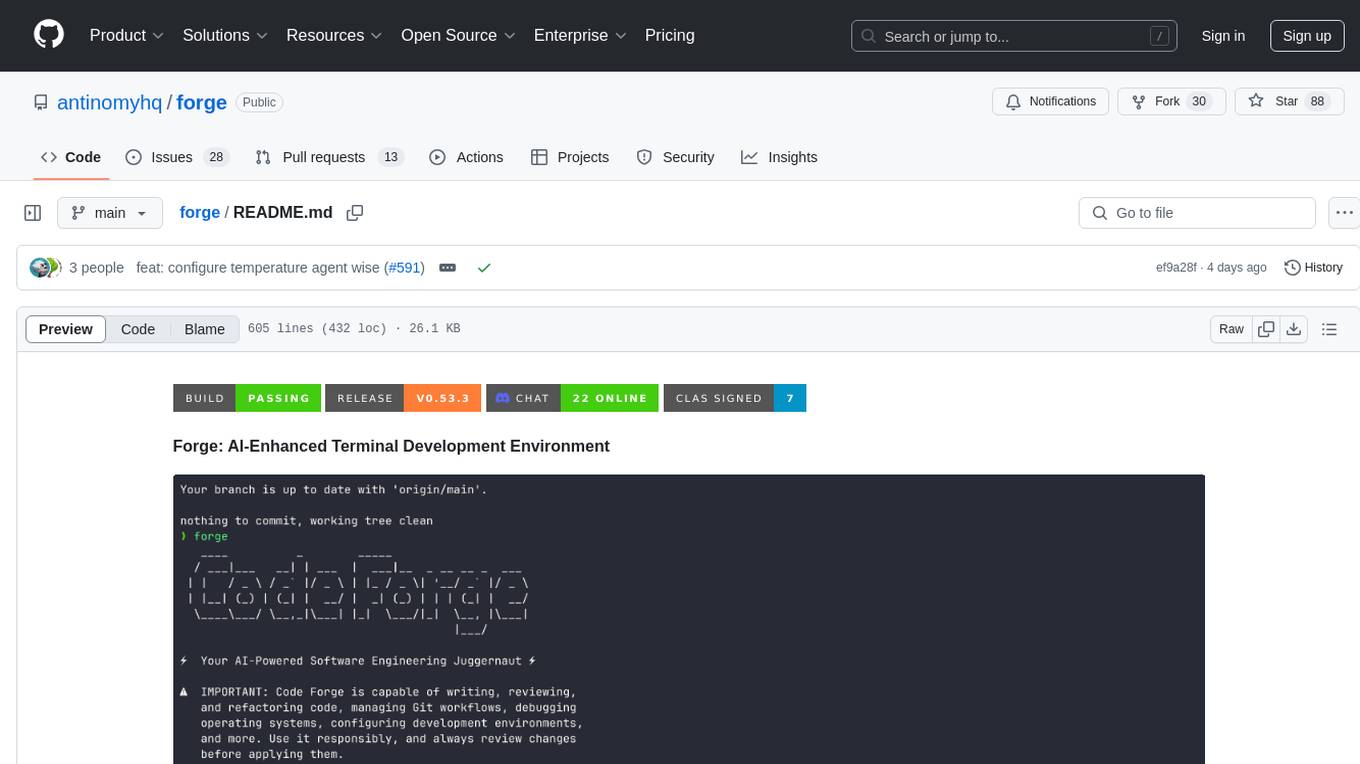
forge
Forge is a powerful open-source tool for building modern web applications. It provides a simple and intuitive interface for developers to quickly scaffold and deploy projects. With Forge, you can easily create custom components, manage dependencies, and streamline your development workflow. Whether you are a beginner or an experienced developer, Forge offers a flexible and efficient solution for your web development needs.
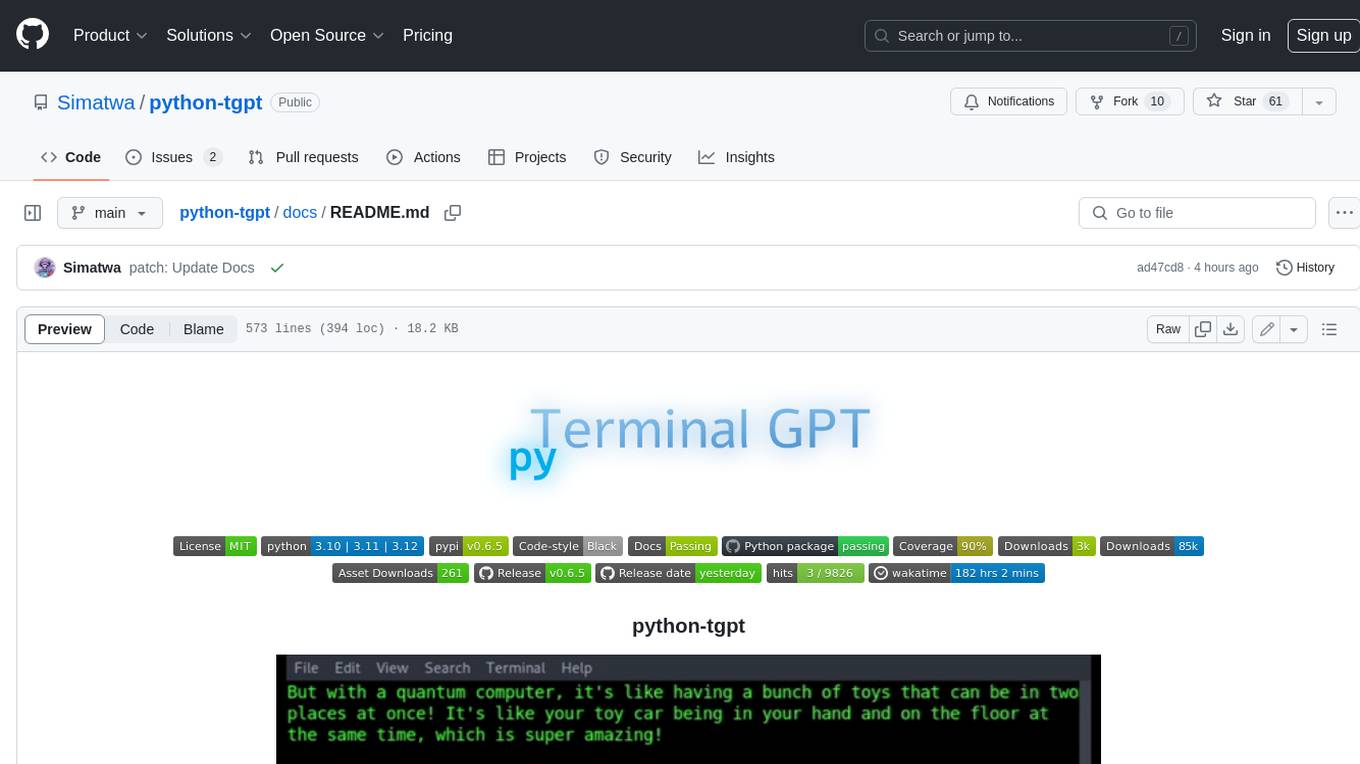
python-tgpt
Python-tgpt is a Python package that enables seamless interaction with over 45 free LLM providers without requiring an API key. It also provides image generation capabilities. The name _python-tgpt_ draws inspiration from its parent project tgpt, which operates on Golang. Through this Python adaptation, users can effortlessly engage with a number of free LLMs available, fostering a smoother AI interaction experience.
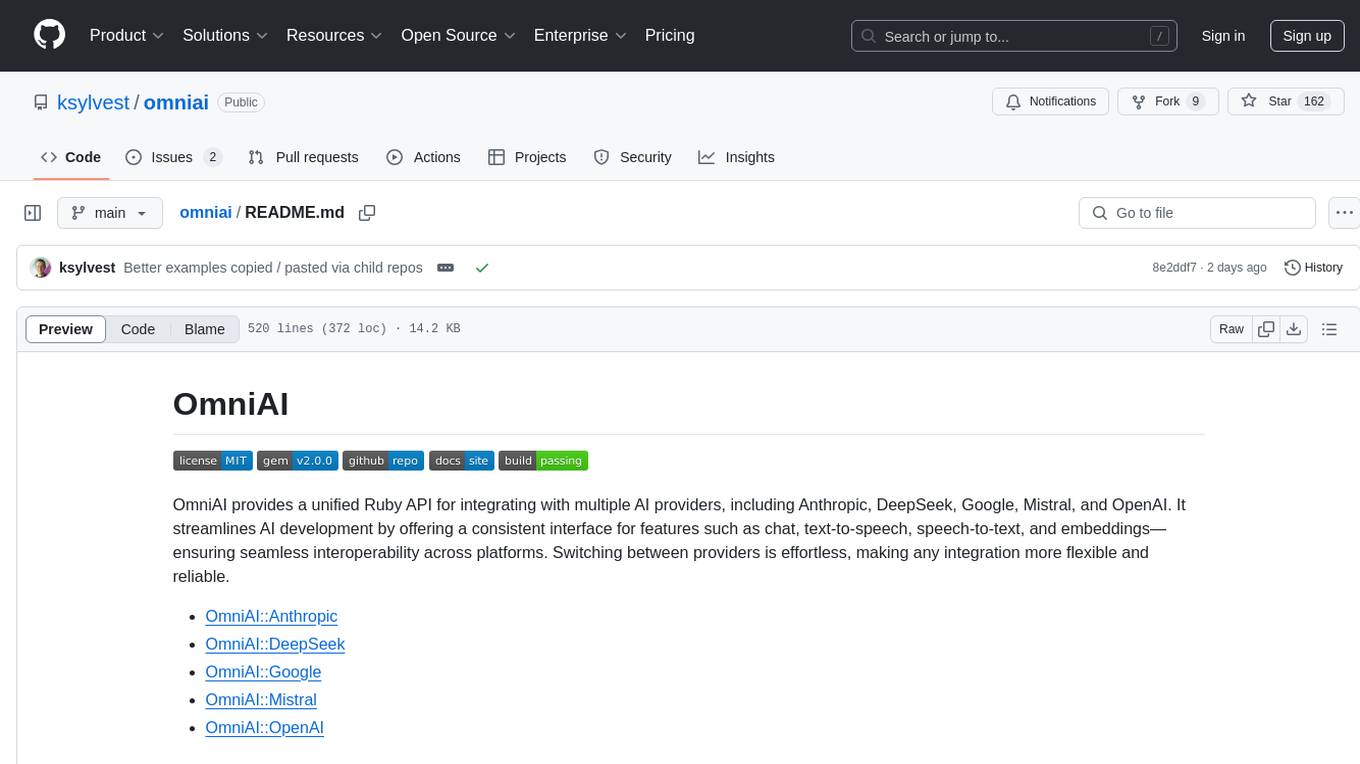
omniai
OmniAI provides a unified Ruby API for integrating with multiple AI providers, streamlining AI development by offering a consistent interface for features such as chat, text-to-speech, speech-to-text, and embeddings. It ensures seamless interoperability across platforms and effortless switching between providers, making integrations more flexible and reliable.
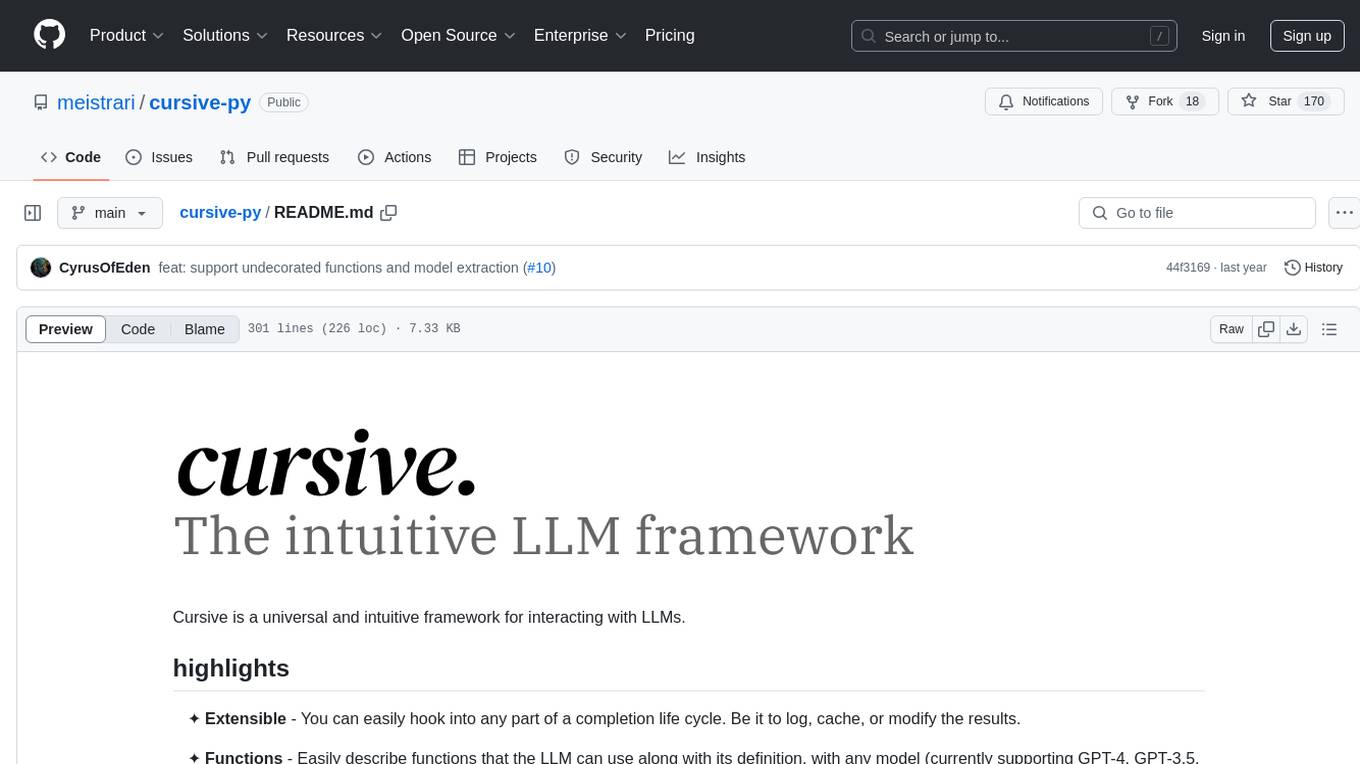
cursive-py
Cursive is a universal and intuitive framework for interacting with LLMs. It is extensible, allowing users to hook into any part of a completion life cycle. Users can easily describe functions that LLMs can use with any supported model. Cursive aims to bridge capabilities between different models, providing a single interface for users to choose any model. It comes with built-in token usage and costs calculations, automatic retry, and model expanding features. Users can define and describe functions, generate Pydantic BaseModels, hook into completion life cycle, create embeddings, and configure retry and model expanding behavior. Cursive supports various models from OpenAI, Anthropic, OpenRouter, Cohere, and Replicate, with options to pass API keys for authentication.
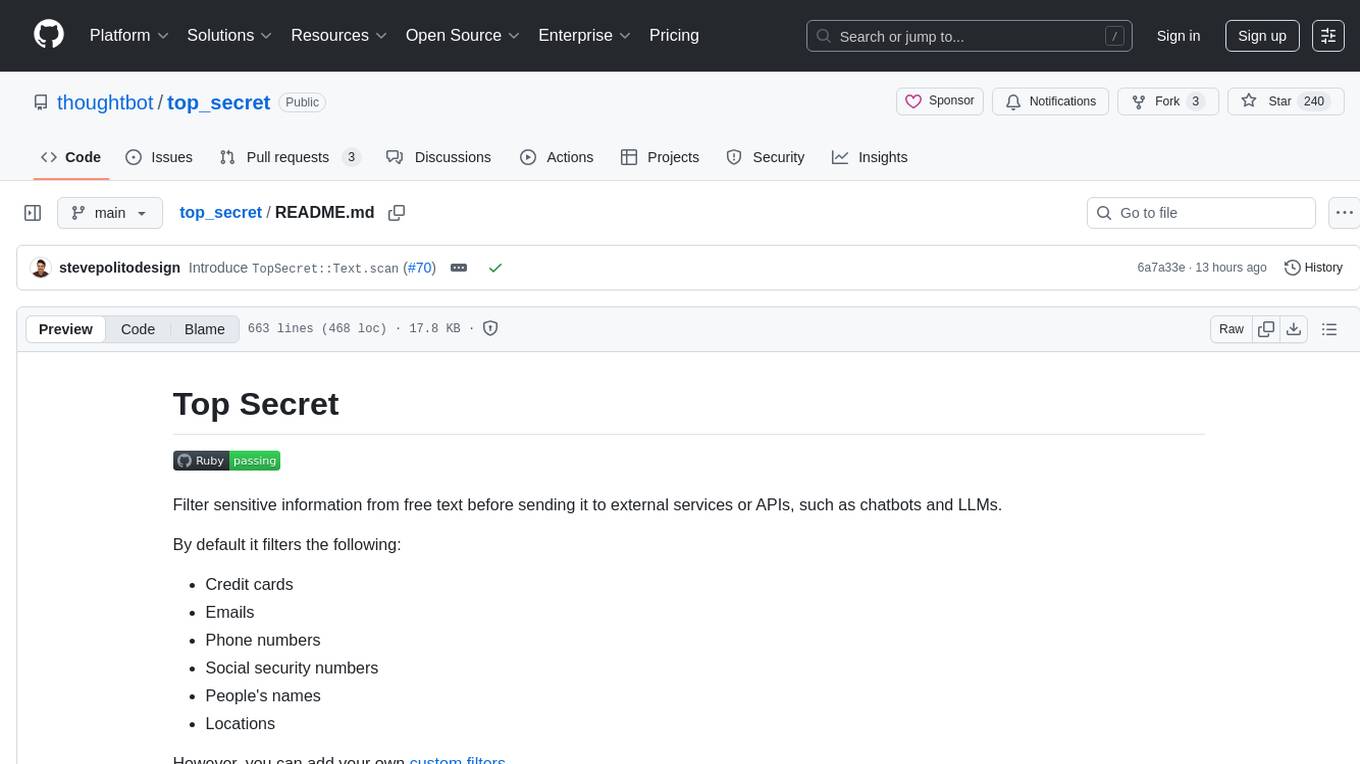
top_secret
Top Secret is a Ruby gem designed to filter sensitive information from free text before sending it to external services or APIs, such as chatbots and LLMs. It provides default filters for credit cards, emails, phone numbers, social security numbers, people's names, and locations, with the ability to add custom filters. Users can configure the tool to handle sensitive information redaction, scan for sensitive data, batch process messages, and restore filtered text from external services. Top Secret uses Regex and NER filters to detect and redact sensitive information, allowing users to override default filters, disable specific filters, and add custom filters globally. The tool is suitable for applications requiring data privacy and security measures.
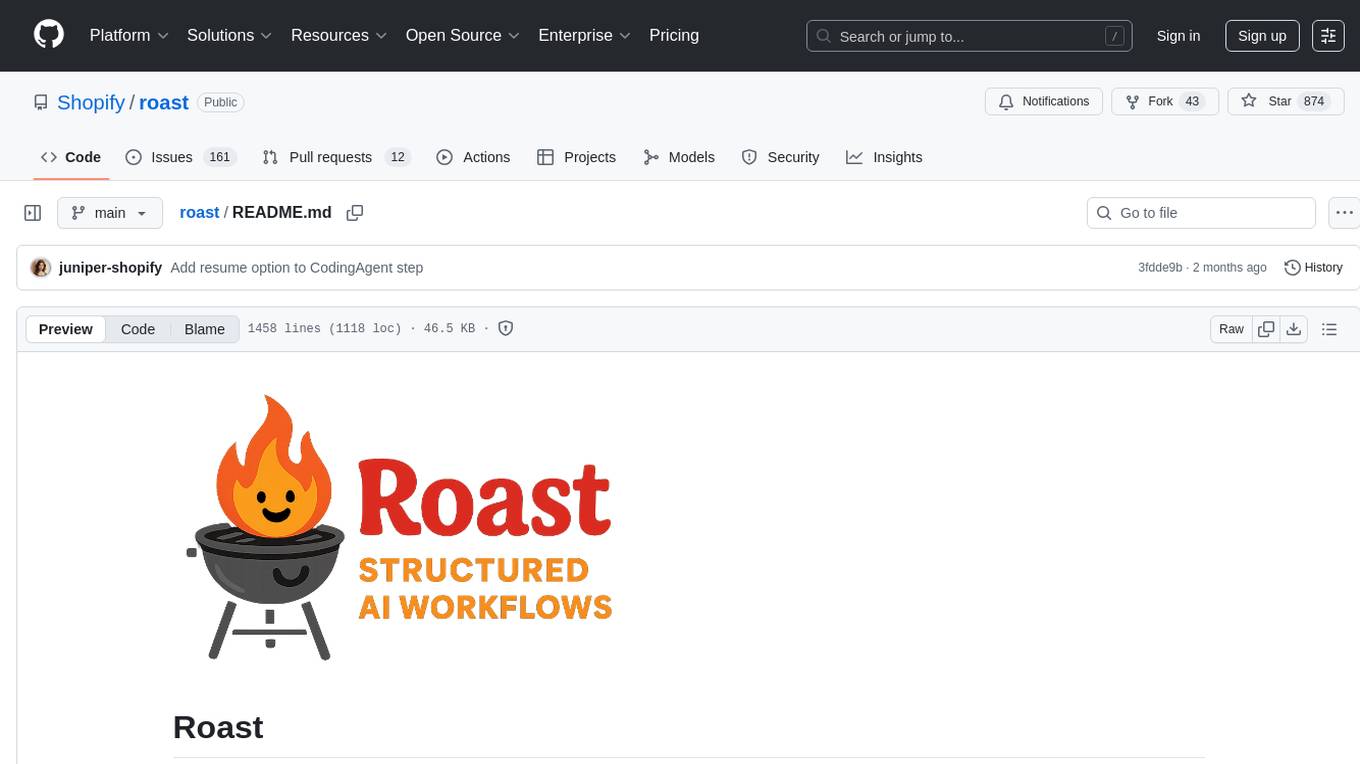
roast
Roast is a convention-oriented framework for creating structured AI workflows maintained by the Augmented Engineering team at Shopify. It provides a structured, declarative approach to building AI workflows with convention over configuration, built-in tools for file operations, search, and AI interactions, Ruby integration for custom steps, shared context between steps, step customization with AI models and parameters, session replay, parallel execution, function caching, and extensive instrumentation for monitoring workflow execution, AI calls, and tool usage.
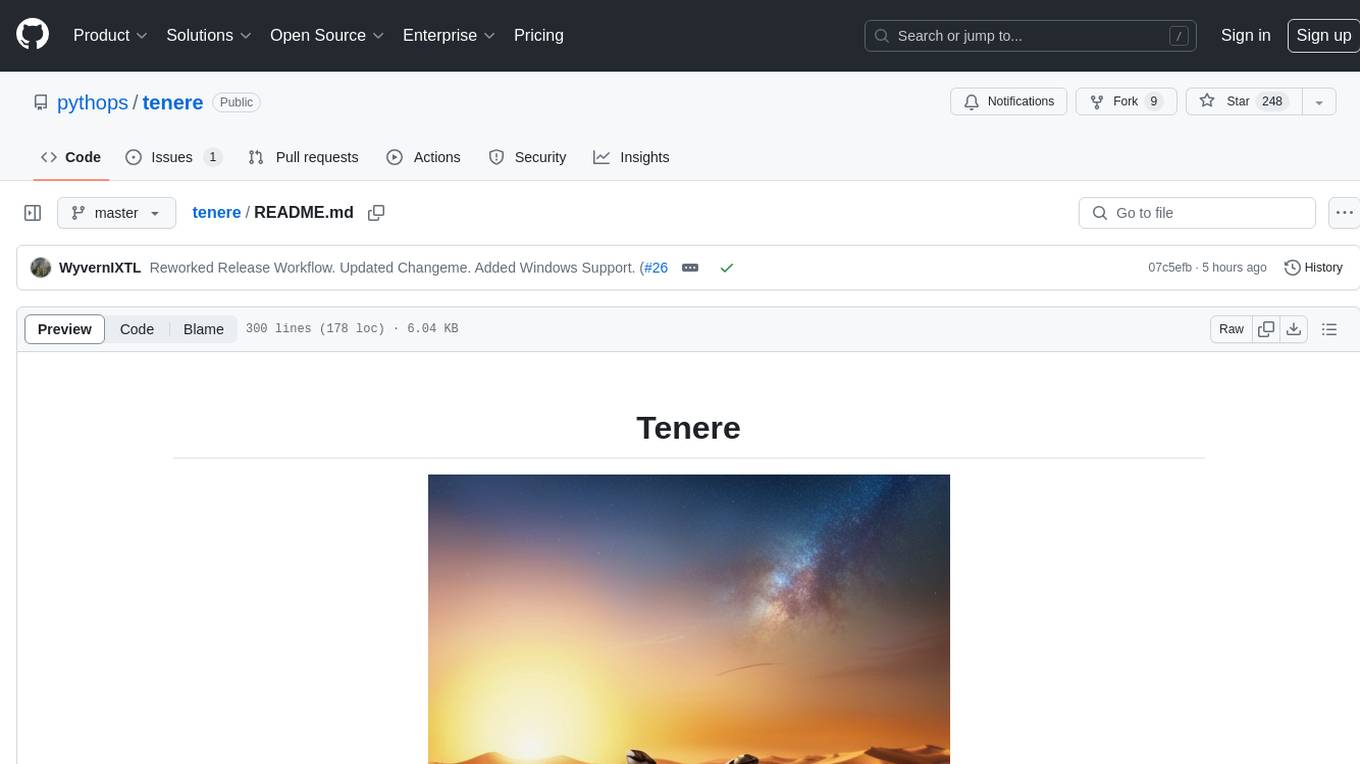
tenere
Tenere is a TUI interface for Language Model Libraries (LLMs) written in Rust. It provides syntax highlighting, chat history, saving chats to files, Vim keybindings, copying text from/to clipboard, and supports multiple backends. Users can configure Tenere using a TOML configuration file, set key bindings, and use different LLMs such as ChatGPT, llama.cpp, and ollama. Tenere offers default key bindings for global and prompt modes, with features like starting a new chat, saving chats, scrolling, showing chat history, and quitting the app. Users can interact with the prompt in different modes like Normal, Visual, and Insert, with various key bindings for navigation, editing, and text manipulation.
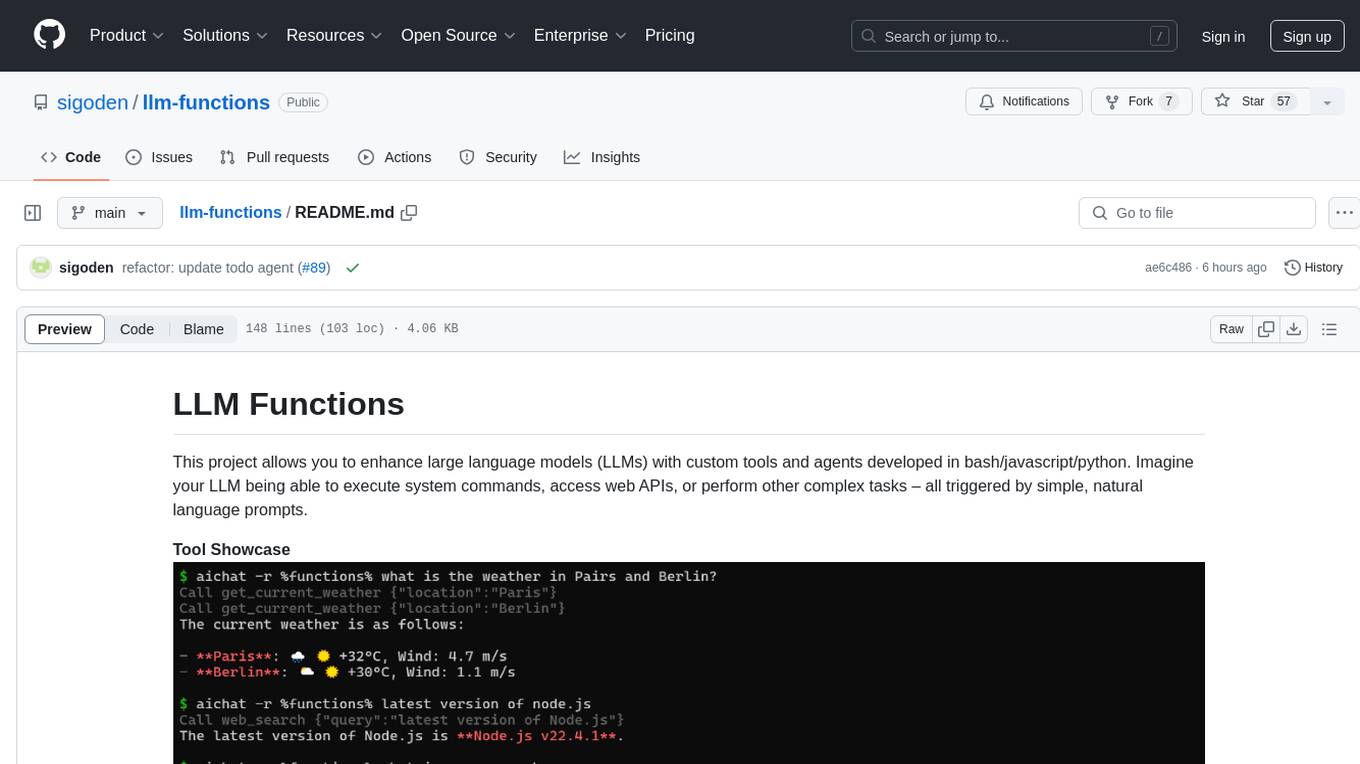
llm-functions
LLM Functions is a project that enables the enhancement of large language models (LLMs) with custom tools and agents developed in bash, javascript, and python. Users can create tools for their LLM to execute system commands, access web APIs, or perform other complex tasks triggered by natural language prompts. The project provides a framework for building tools and agents, with tools being functions written in the user's preferred language and automatically generating JSON declarations based on comments. Agents combine prompts, function callings, and knowledge (RAG) to create conversational AI agents. The project is designed to be user-friendly and allows users to easily extend the capabilities of their language models.
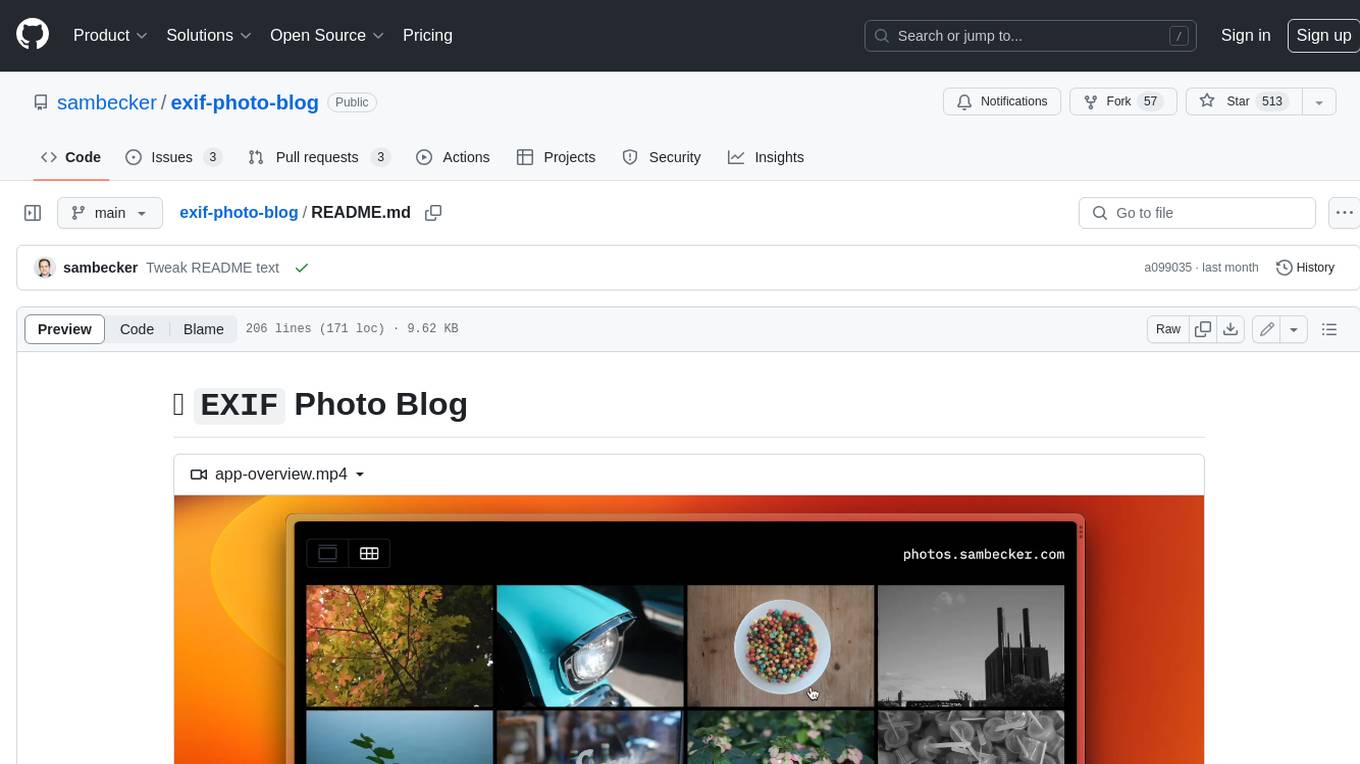
exif-photo-blog
EXIF Photo Blog is a full-stack photo blog application built with Next.js, Vercel, and Postgres. It features built-in authentication, photo upload with EXIF extraction, photo organization by tag, infinite scroll, light/dark mode, automatic OG image generation, a CMD-K menu with photo search, experimental support for AI-generated descriptions, and support for Fujifilm simulations. The application is easy to deploy to Vercel with just a few clicks and can be customized with a variety of environment variables.
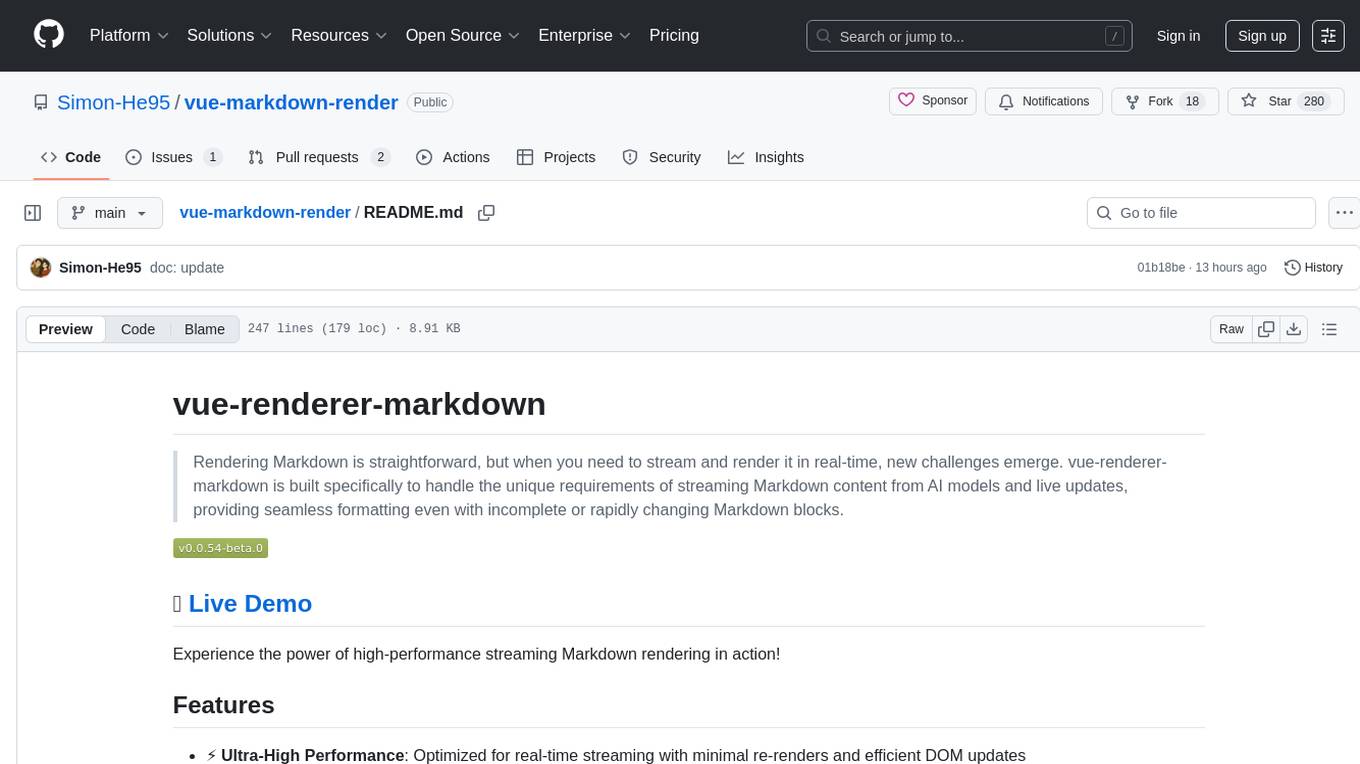
vue-markdown-render
vue-renderer-markdown is a high-performance tool designed for streaming and rendering Markdown content in real-time. It is optimized for handling incomplete or rapidly changing Markdown blocks, making it ideal for scenarios like AI model responses, live content updates, and real-time Markdown rendering. The tool offers features such as ultra-high performance, streaming-first design, Monaco integration, progressive Mermaid rendering, custom components integration, complete Markdown support, real-time updates, TypeScript support, and zero configuration setup. It solves challenges like incomplete syntax blocks, rapid content changes, cursor positioning complexities, and graceful handling of partial tokens with a streaming-optimized architecture.
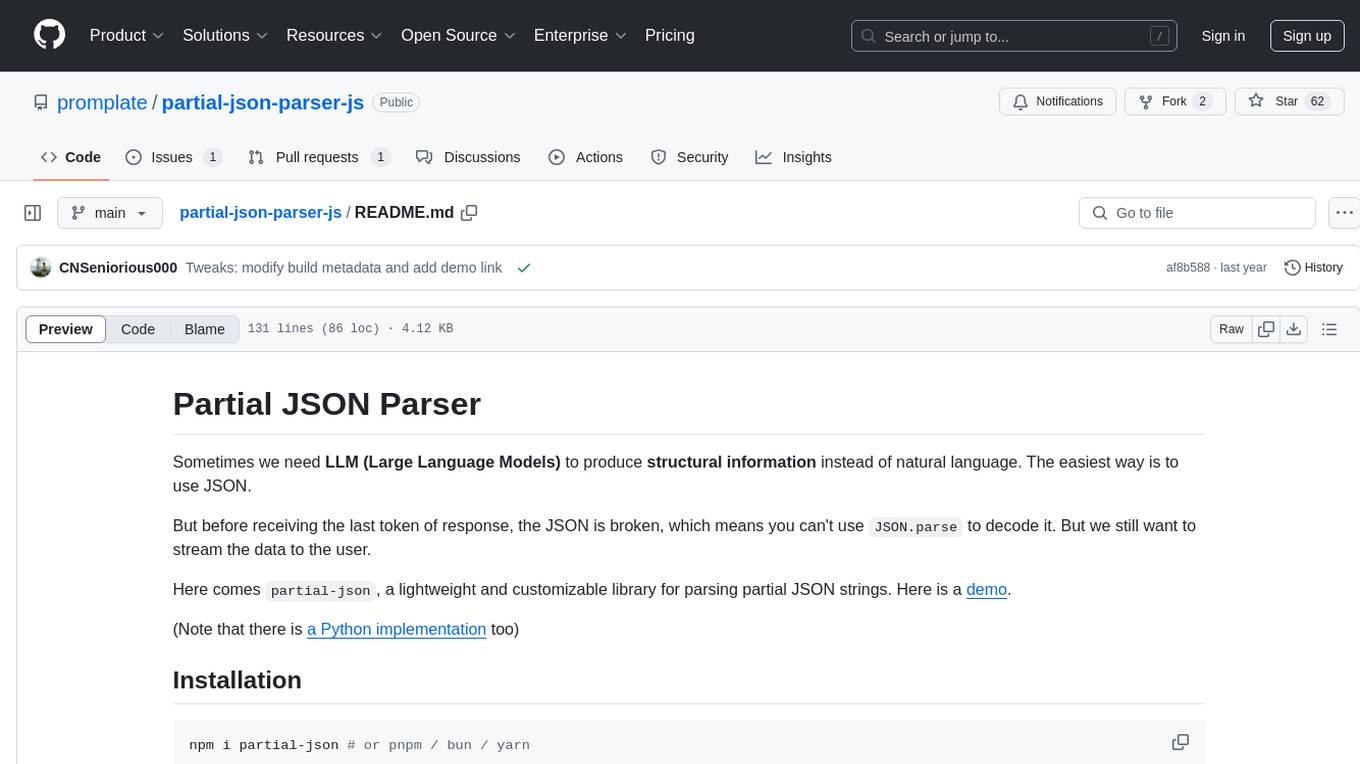
partial-json-parser-js
Partial JSON Parser is a lightweight and customizable library for parsing partial JSON strings. It allows users to parse incomplete JSON data and stream it to the user. The library provides options to specify what types of partialness are allowed during parsing, such as strings, objects, arrays, special values, and more. It helps handle malformed JSON and returns the parsed JavaScript value. Partial JSON Parser is implemented purely in JavaScript and offers both commonjs and esm builds.
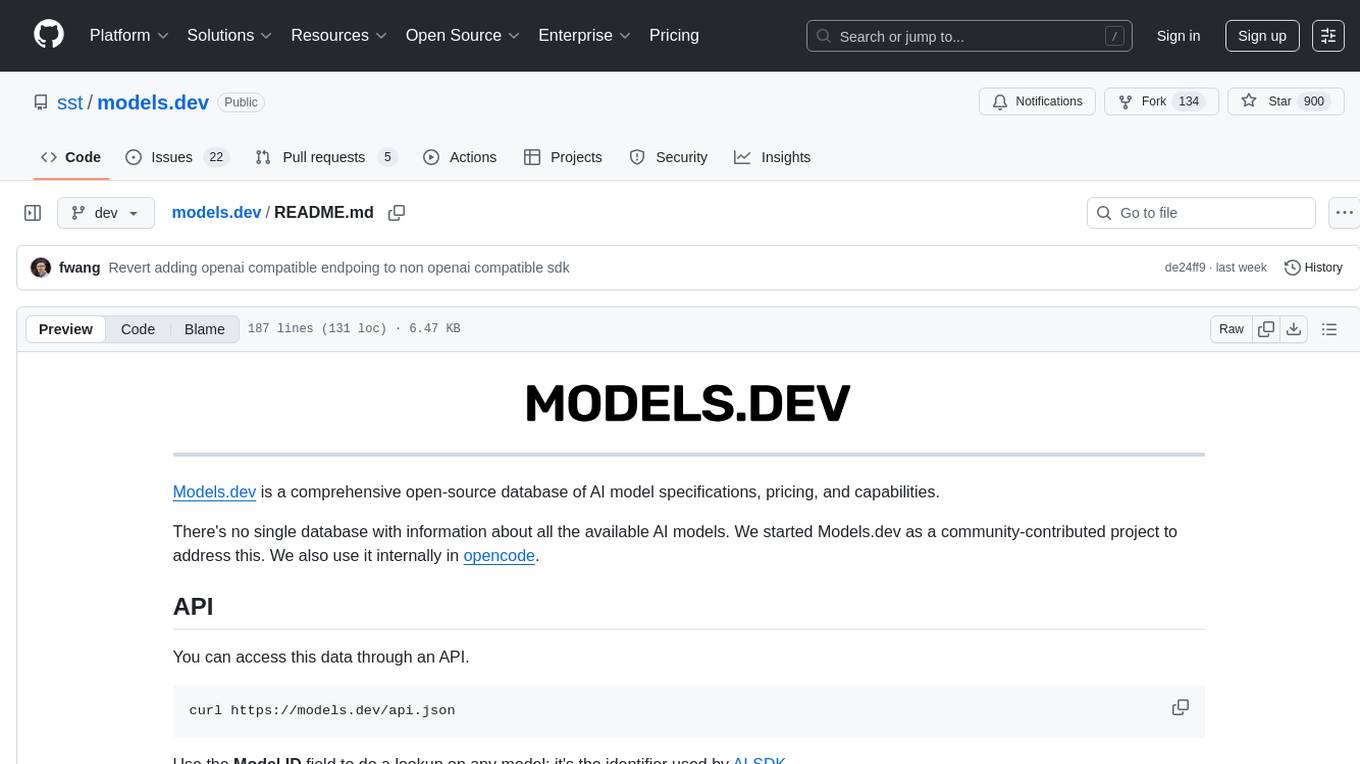
models.dev
Models.dev is an open-source database providing detailed specifications, pricing, and capabilities of various AI models. It serves as a centralized platform for accessing information on AI models, allowing users to contribute and utilize the data through an API. The repository contains data stored in TOML files, organized by provider and model, along with SVG logos. Users can contribute by adding new models following specific guidelines and submitting pull requests for validation. The project aims to maintain an up-to-date and comprehensive database of AI model information.
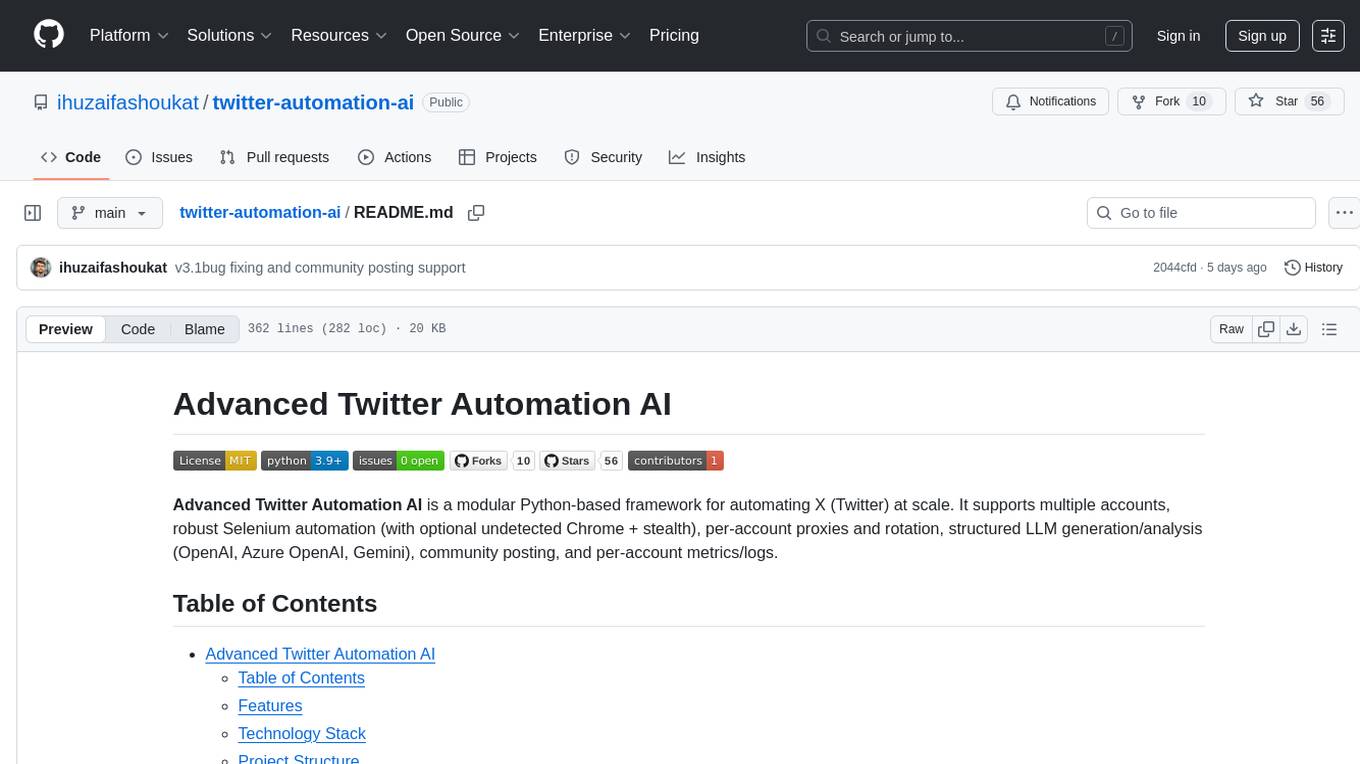
twitter-automation-ai
Advanced Twitter Automation AI is a modular Python-based framework for automating Twitter at scale. It supports multiple accounts, robust Selenium automation with optional undetected Chrome + stealth, per-account proxies and rotation, structured LLM generation/analysis, community posting, and per-account metrics/logs. The tool allows seamless management and automation of multiple Twitter accounts, content scraping, publishing, LLM integration for generating and analyzing tweet content, engagement automation, configurable automation, browser automation using Selenium, modular design for easy extension, comprehensive logging, community posting, stealth mode for reduced fingerprinting, per-account proxies, LLM structured prompts, and per-account JSON summaries and event logs for observability.
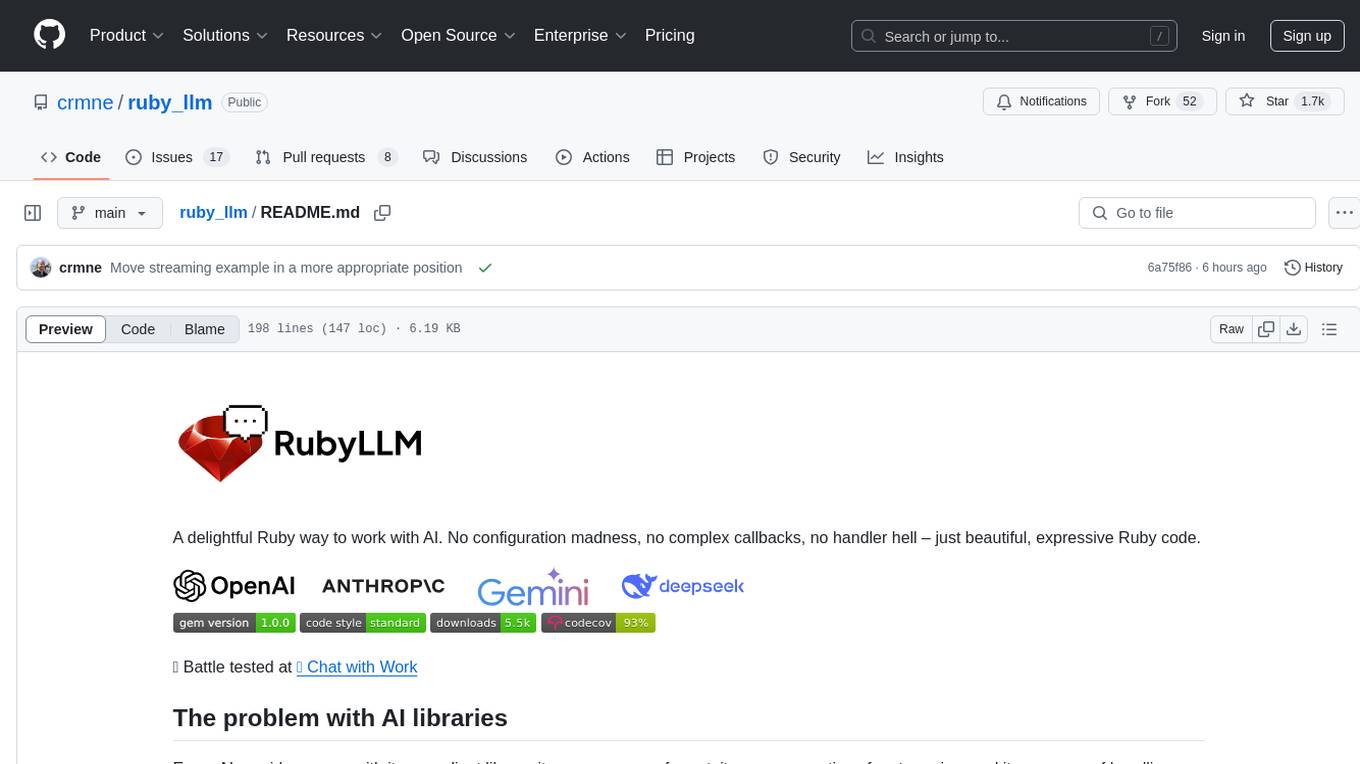
ruby_llm
RubyLLM is a delightful Ruby tool for working with AI, providing a beautiful API for various AI providers like OpenAI, Anthropic, Gemini, and DeepSeek. It simplifies AI usage by offering a consistent format, minimal dependencies, and a joyful coding experience. Users can chat, analyze images, audio, and documents, generate images, create vector embeddings, and integrate AI with Ruby code effortlessly. The tool also supports Rails integration, streaming responses, and tool creation, making AI tasks seamless and enjoyable.
For similar tasks

mediasoup-client-aiortc
mediasoup-client-aiortc is a handler for the aiortc Python library, allowing Node.js applications to connect to a mediasoup server using WebRTC for real-time audio, video, and DataChannel communication. It facilitates the creation of Worker instances to manage Python subprocesses, obtain audio/video tracks, and create mediasoup-client handlers. The tool supports features like getUserMedia, handlerFactory creation, and event handling for subprocess closure and unexpected termination. It provides custom classes for media stream and track constraints, enabling diverse audio/video sources like devices, files, or URLs. The tool enhances WebRTC capabilities in Node.js applications through seamless Python subprocess communication.
For similar jobs
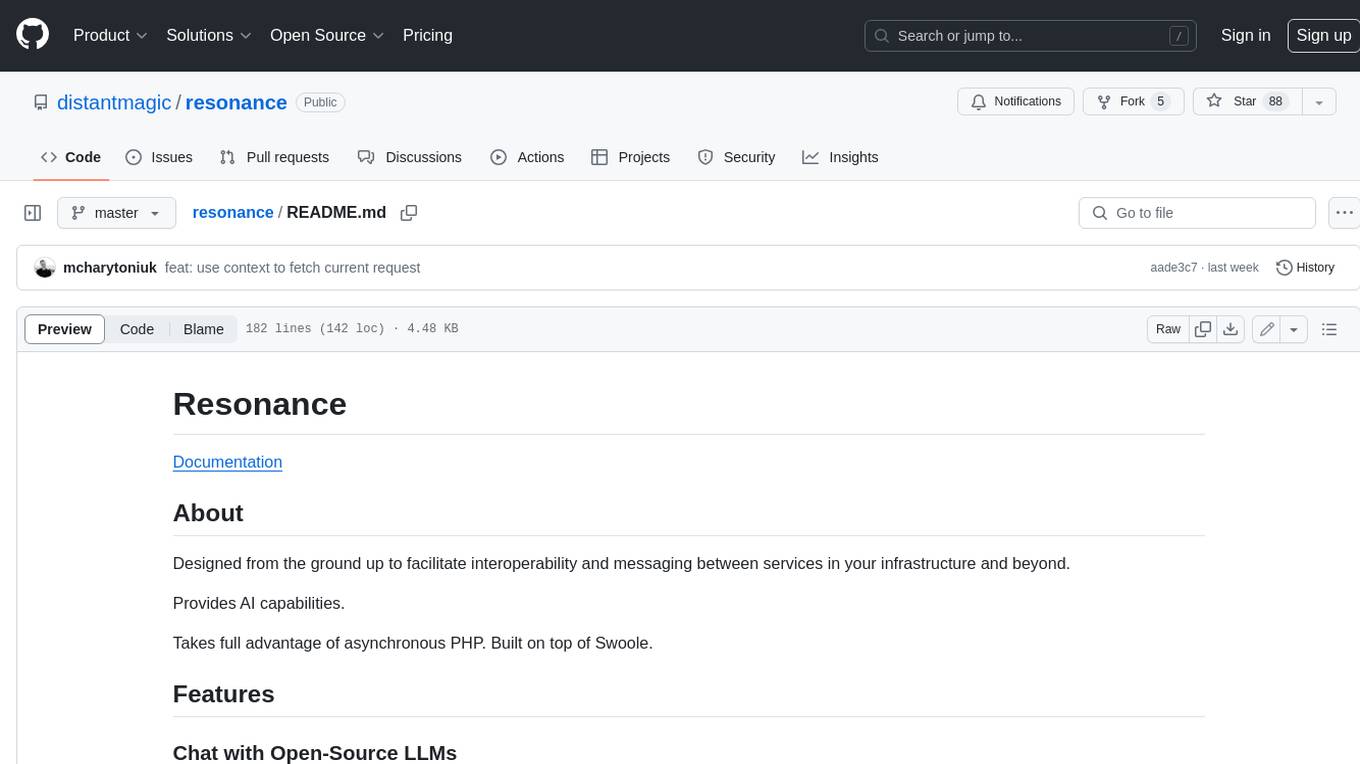
resonance
Resonance is a framework designed to facilitate interoperability and messaging between services in your infrastructure and beyond. It provides AI capabilities and takes full advantage of asynchronous PHP, built on top of Swoole. With Resonance, you can: * Chat with Open-Source LLMs: Create prompt controllers to directly answer user's prompts. LLM takes care of determining user's intention, so you can focus on taking appropriate action. * Asynchronous Where it Matters: Respond asynchronously to incoming RPC or WebSocket messages (or both combined) with little overhead. You can set up all the asynchronous features using attributes. No elaborate configuration is needed. * Simple Things Remain Simple: Writing HTTP controllers is similar to how it's done in the synchronous code. Controllers have new exciting features that take advantage of the asynchronous environment. * Consistency is Key: You can keep the same approach to writing software no matter the size of your project. There are no growing central configuration files or service dependencies registries. Every relation between code modules is local to those modules. * Promises in PHP: Resonance provides a partial implementation of Promise/A+ spec to handle various asynchronous tasks. * GraphQL Out of the Box: You can build elaborate GraphQL schemas by using just the PHP attributes. Resonance takes care of reusing SQL queries and optimizing the resources' usage. All fields can be resolved asynchronously.
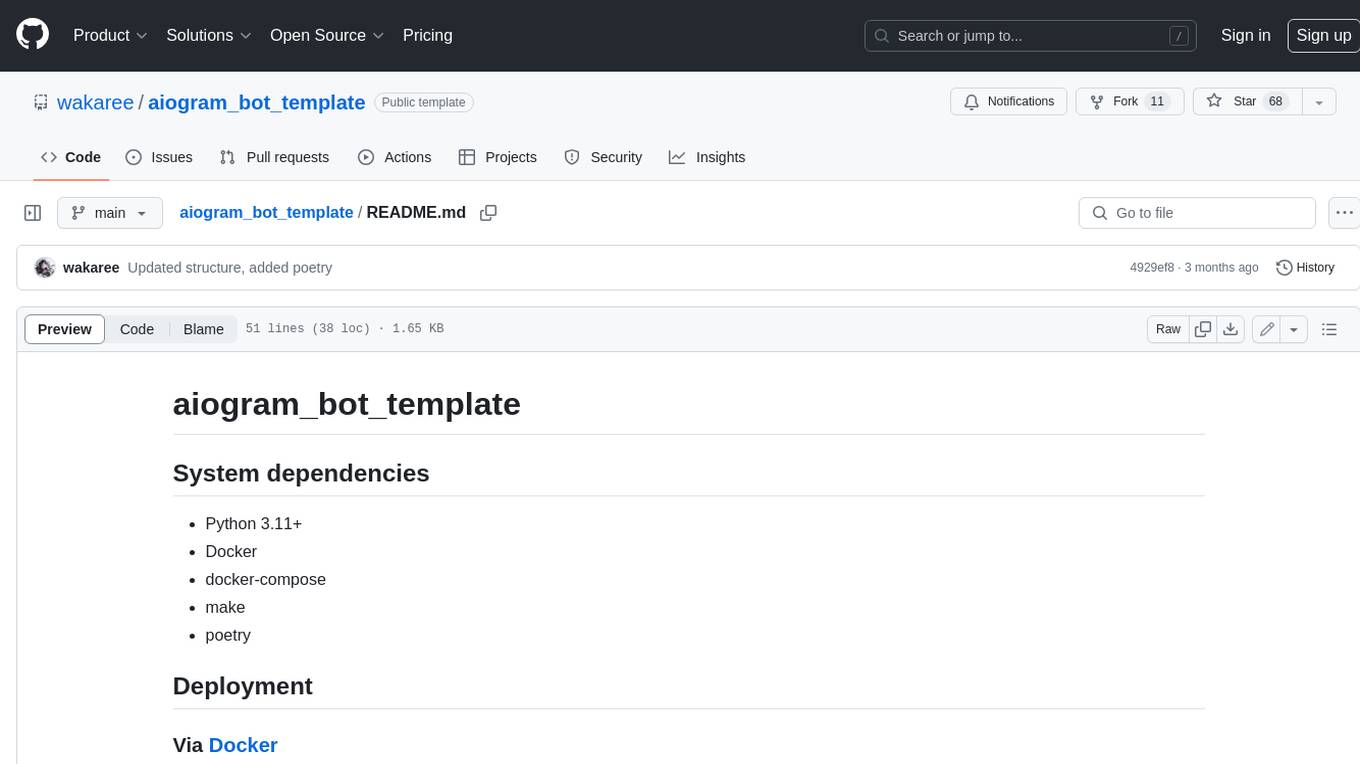
aiogram_bot_template
Aiogram bot template is a boilerplate for creating Telegram bots using Aiogram framework. It provides a solid foundation for building robust and scalable bots with a focus on code organization, database integration, and localization.
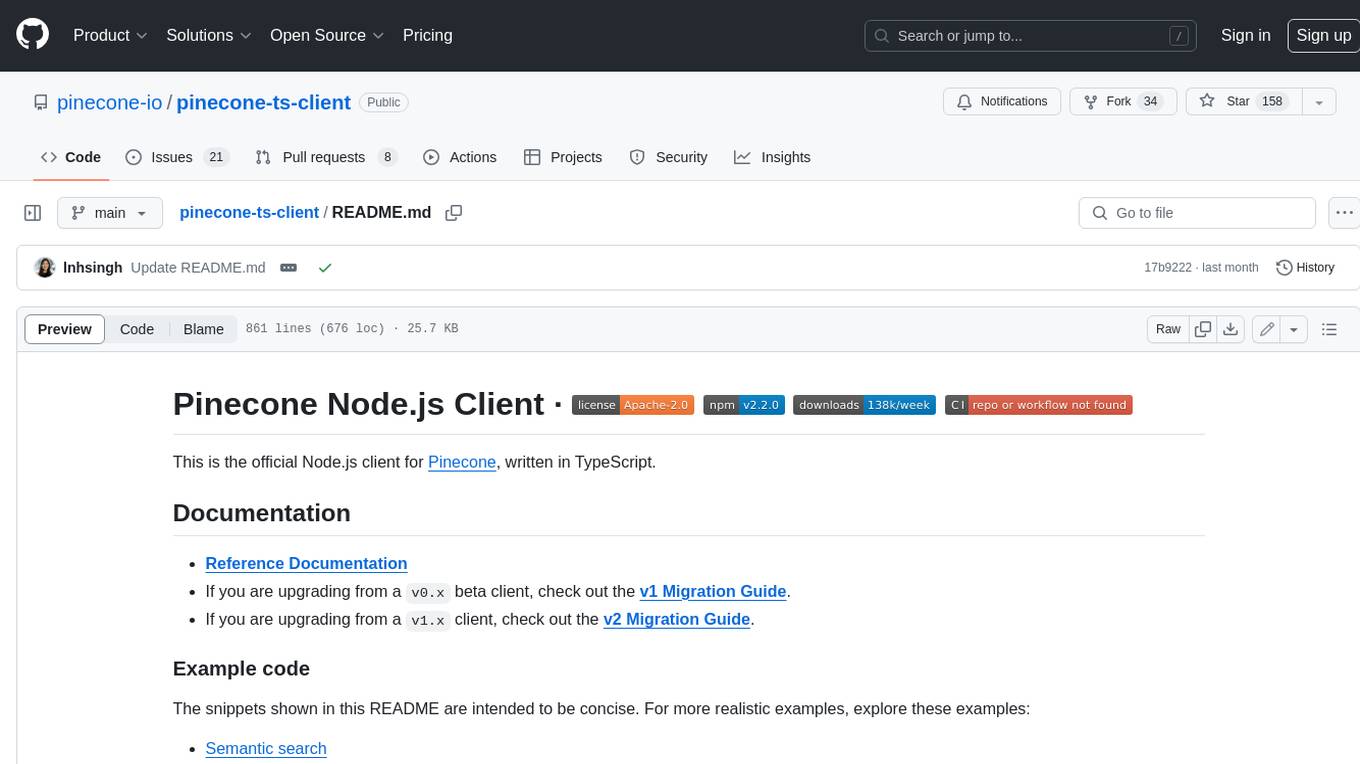
pinecone-ts-client
The official Node.js client for Pinecone, written in TypeScript. This client library provides a high-level interface for interacting with the Pinecone vector database service. With this client, you can create and manage indexes, upsert and query vector data, and perform other operations related to vector search and retrieval. The client is designed to be easy to use and provides a consistent and idiomatic experience for Node.js developers. It supports all the features and functionality of the Pinecone API, making it a comprehensive solution for building vector-powered applications in Node.js.
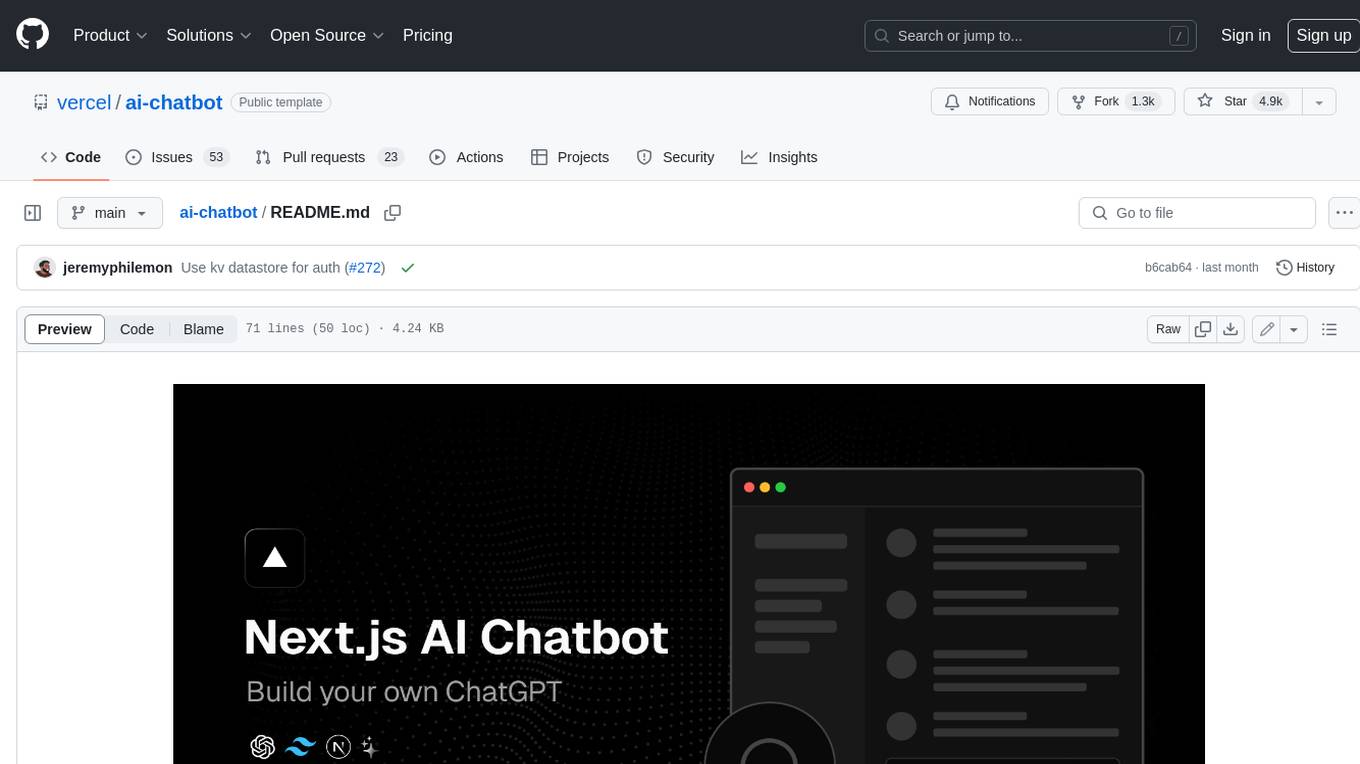
ai-chatbot
Next.js AI Chatbot is an open-source app template for building AI chatbots using Next.js, Vercel AI SDK, OpenAI, and Vercel KV. It includes features like Next.js App Router, React Server Components, Vercel AI SDK for streaming chat UI, support for various AI models, Tailwind CSS styling, Radix UI for headless components, chat history management, rate limiting, session storage with Vercel KV, and authentication with NextAuth.js. The template allows easy deployment to Vercel and customization of AI model providers.
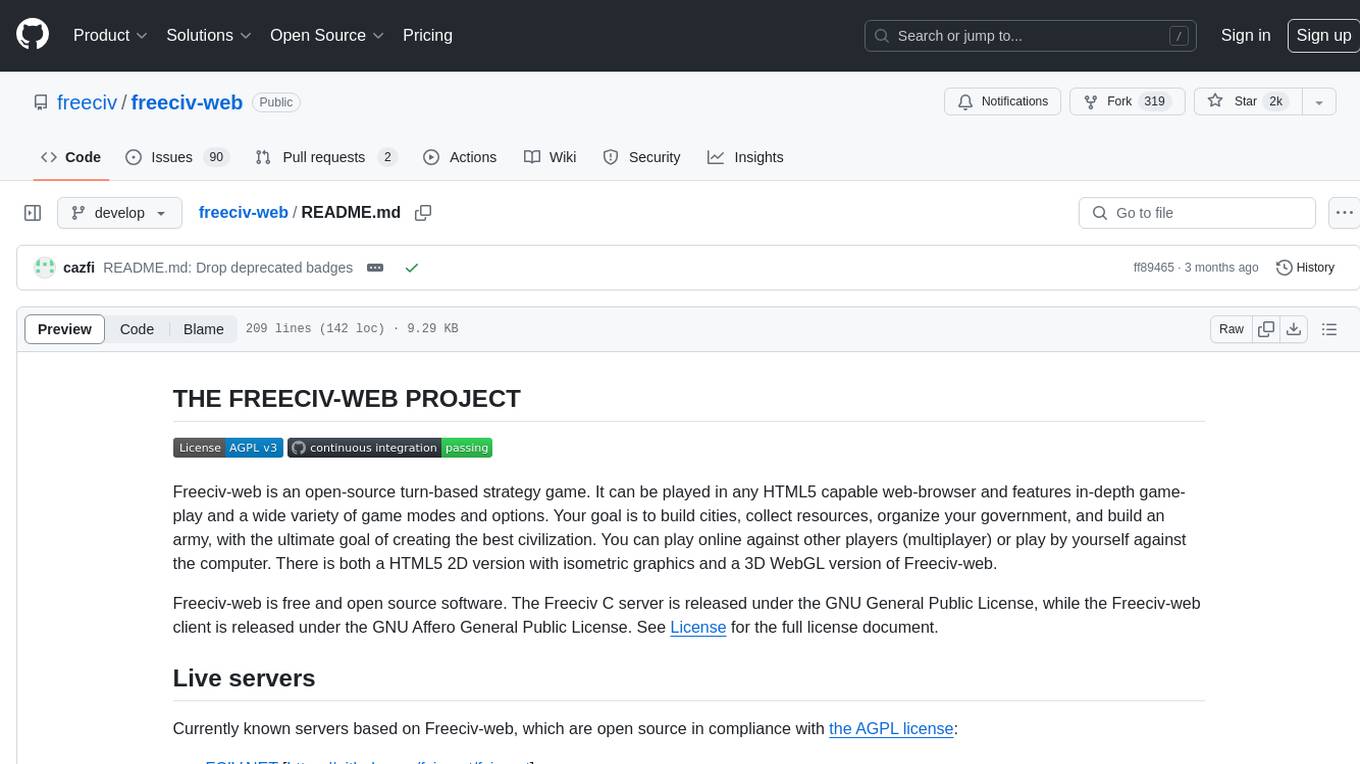
freeciv-web
Freeciv-web is an open-source turn-based strategy game that can be played in any HTML5 capable web-browser. It features in-depth gameplay, a wide variety of game modes and options. Players aim to build cities, collect resources, organize their government, and build an army to create the best civilization. The game offers both multiplayer and single-player modes, with a 2D version with isometric graphics and a 3D WebGL version available. The project consists of components like Freeciv-web, Freeciv C server, Freeciv-proxy, Publite2, and pbem for play-by-email support. Developers interested in contributing can check the GitHub issues and TODO file for tasks to work on.
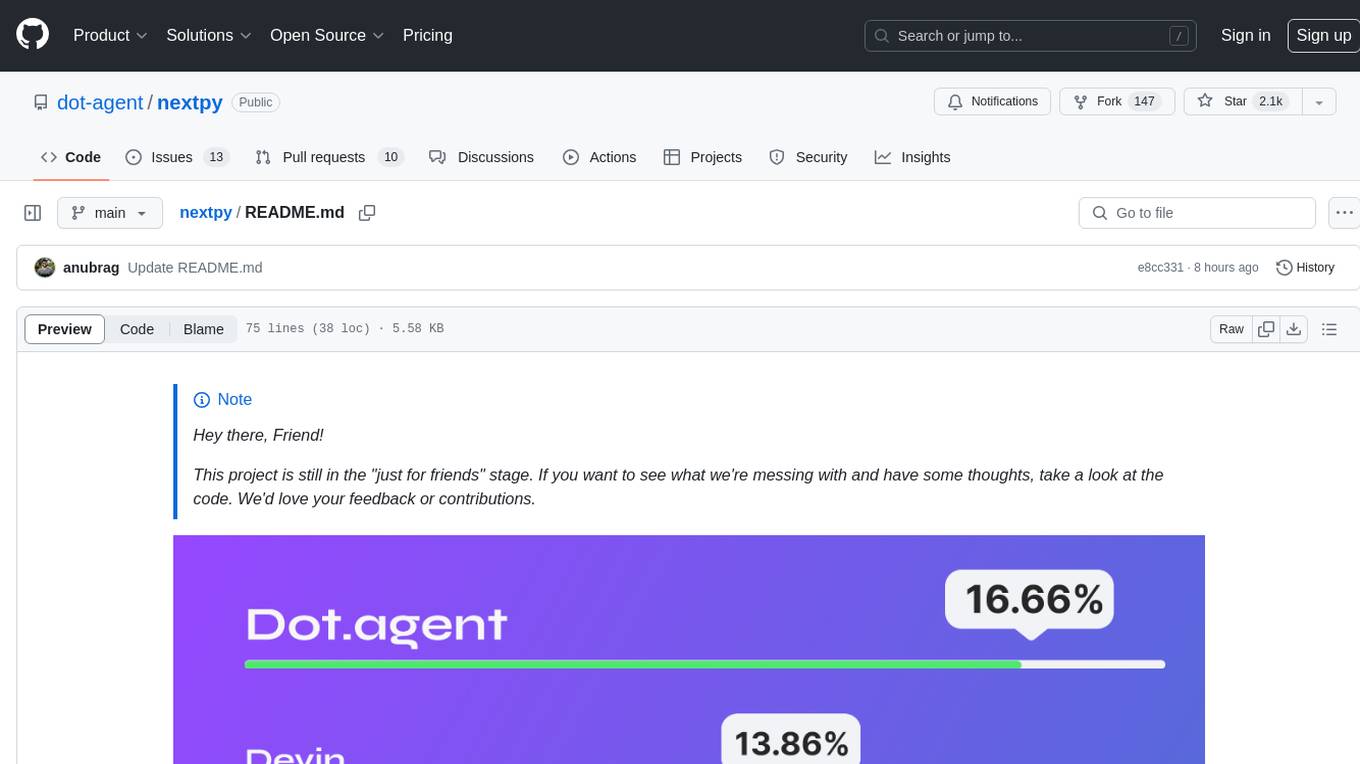
nextpy
Nextpy is a cutting-edge software development framework optimized for AI-based code generation. It provides guardrails for defining AI system boundaries, structured outputs for prompt engineering, a powerful prompt engine for efficient processing, better AI generations with precise output control, modularity for multiplatform and extensible usage, developer-first approach for transferable knowledge, and containerized & scalable deployment options. It offers 4-10x faster performance compared to Streamlit apps, with a focus on cooperation within the open-source community and integration of key components from various projects.
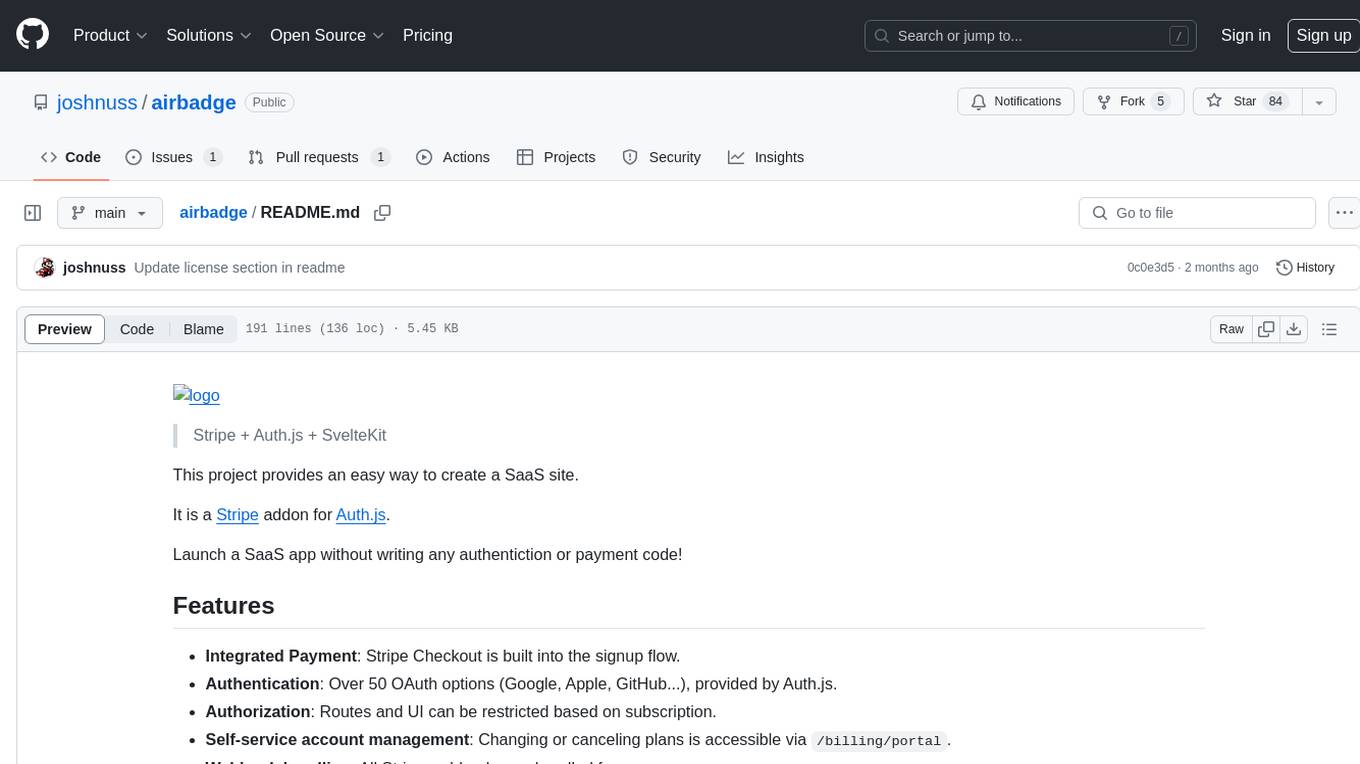
airbadge
Airbadge is a Stripe addon for Auth.js that provides an easy way to create a SaaS site without writing any authentication or payment code. It integrates Stripe Checkout into the signup flow, offers over 50 OAuth options for authentication, allows route and UI restriction based on subscription, enables self-service account management, handles all Stripe webhooks, supports trials and free plans, includes subscription and plan data in the session, and is open source with a BSL license. The project also provides components for conditional UI display based on subscription status and helper functions to restrict route access. Additionally, it offers a billing endpoint with various routes for billing operations. Setup involves installing @airbadge/sveltekit, setting up a database provider for Auth.js, adding environment variables, configuring authentication and billing options, and forwarding Stripe events to localhost.
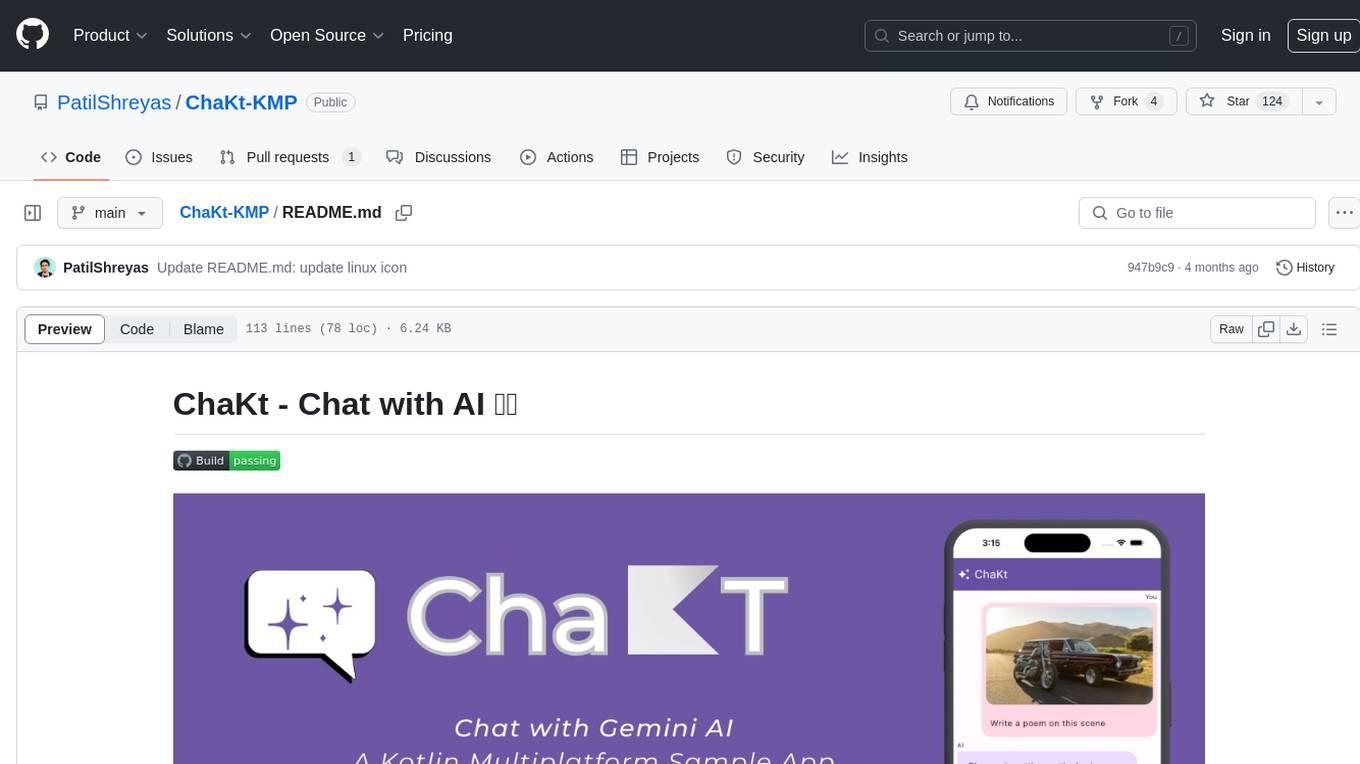
ChaKt-KMP
ChaKt is a multiplatform app built using Kotlin and Compose Multiplatform to demonstrate the use of Generative AI SDK for Kotlin Multiplatform to generate content using Google's Generative AI models. It features a simple chat based user interface and experience to interact with AI. The app supports mobile, desktop, and web platforms, and is built with Kotlin Multiplatform, Kotlin Coroutines, Compose Multiplatform, Generative AI SDK, Calf - File picker, and BuildKonfig. Users can contribute to the project by following the guidelines in CONTRIBUTING.md. The app is licensed under the MIT License.

